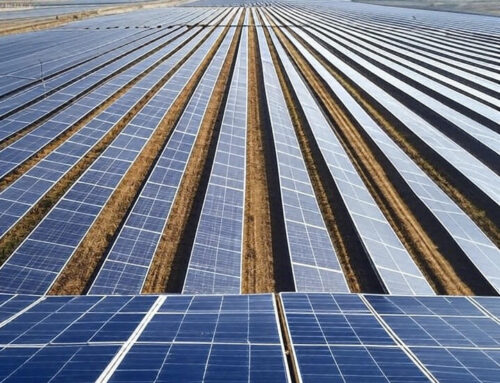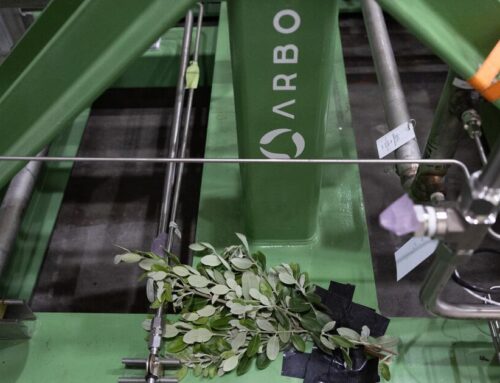Faroe Islands: 100 % Renewable Goal With Global Relevance
October 4, 2025
The Faroe Islands are to reach 100 percent renewable energy by 2030 – uniquely challenging due to the isolation from the rest of the world. If they can make it there, we can make it anywhere, and the trick may be tidal power.
The Faroe Islandsare self-governing under the Kingdom of Denmark, 30 hours by the weekly ferry from northern Jutland in Denmark and almost as far from Iceland, Norway or Greenland. The population is just over 50 000, easily outnumbered by the sheep that graze the green hillside grass of the 18 islands. They are the reason there are almost no trees – not the harsh weather even though it certainly does not make things easier.
Faroe target: 100 % renewable
The lack of trees means that wood for housing is shipped in, and thus expensive. This is true for almost everything else as well – not much is made on the islands, what you need has to be shipped in across the ocean, often using the same ferry that increasing numbers of coolcation-tourists arrive by. This lack of resources is a key driving force for the Faroe decision to be a 100 percent renewable by 2030 – uniquely ambitious since other islands with similar targets all have grid connection with the mainland.
The 2030 target has an important caveat; it is to be achieved on land. Switching from oil to electricity and renewables for heating, transport and industry is hard enough but including shipping and fishing would add a whole new dimension.
Terji Nielsen, Head of R&D at the Faroese energy company Sev used to be confident that the grid would be fully renewable by 2030 – after all, he designed the masterplan to get there. But the 2024 figures are not encouraging. 43% of the 480 GWh of electricity was produced with heavy fuel oil and diesel, 32% by wind, 23% by hydropower, and the remaining 2% percent from biogas, solar and tidal energy.
In mainland Denmark, more than half of the electricity comes from wind power – so in the windy islands in the middle of the ocean, it should be more. But after the first wind turbines were installed over 20 years ago, development has been slower than expected. Local opposition has delayed the development of several sites and the very deep waters almost immediately off shore makes off-shore wind impossibly expensive. Floating wind would be a possibility, but the same rough conditions means that it is not ready until well beyond the 2030 deadline. Furthermore, while the Faroese claim to have “onshore turbines with offshore efficiency”, the wind is erratic with frequent passages of high- and low-pressure systems.
Energy storage needed
Energy from windy days thus needs to be stored for calmer times, using batteries for short durations, water pump systems for longer periods. The Faroese islands have hydro power since a hundred years with dams that can be used as energy storage, pumping up water with surplus energy and releasing it to create energy when needed. A new dedicated system was to specifically pump up and release down, but it became much more expensive than planned, and politicians backtracked on the decision with a brief to SEV to find ways to cut costs so much that some say is a soft way of killing the project.
Surprisingly for a place with 270 days of rain a year, the Faroese 2030-plan includes a large share of solar energy. “We have a thousand hours of sun per year, that is more than half of what Denmark has”, says Nielsen optimistically. Faroe conditions are also tough for solar energy, with gusty winds that tear panels apart and salt that block the cells.
Despite heavy promotion, there is only about 30 solar installations in all of the islands, all of them roof-based and most of them small. This is a major disappointment and represents the largest shortfall compared to where Faroe needs to be by now to meet its 2030 target.
Saving energy – not happening
Saving on electricity would be great, but in fact demand is rising – and for reasons hard to oppose. Sales of electric vehicles are now around 50%, with reduced VAT and lower electricity charges for charging. This replaces fossil fuels that need to be shipped in, and so is the population – after a long slump, there is hope for the future with many people moving back to the islands, which increases energy usage. For efficiency, it is not helpful that the electricity price is fixed; while not cheap at 30 eurocents per kWh, the lack of fluctuation means there is no opportunity for people to invest in batteries to buy and sell electricity. Once that changes, so will the behavior of the Faroese customers.
Secret power under the surface: Tidal power
Yet, unseen below the Faroese waters, there is hope for the 2030-target: Tidal power. It has long attracted the imagination and hopes of policy makers and visionaries alike, since it is predictable, has the same potential year-round and particularly for the Faroese islands, has a phase shift between fjords so that available power can be stable 24/7. Most tidal projects are fixed at the seabed in one place and thus cannot efficiently harness the energy in the water; sea water is 832 times heavier than air with a substantially higher kinetic energy content. Enter Swedish up-start Minesto, with its underwater flying kites, using wings that multiply the stream flow through the turbine.
The key factor, explains Minesto’s CEO Martin Edlund, is that power is proportional to the speed cubed. Get twice the flow and you get four times the energy. A stationary turbine would have to be big to catch enough energy to make sense, and then it needs to be sturdy, heavy and expensive to withstand the force. If the turbine moves in the water, it can collect more energy and does not have to be as clumsy. Hence Minesto’s Dragon kite; a fairly small has been flying through the Faroe waters for a few years. Now the first commercial-scale kite is put in to the fjord, with a 12 meter wing span and a 1.2 MW effect.
Collecting more energy means that tidal power becomes cost-effective, and that kites such as these in seven of the many Faroese fjords could supply the islands with 40% of its energy demand. Without tidal energy, wind would need to take around 80% of the total energy mix in 2030 for the target to be met – with tidal energy, demands on wind, solar and hydro are reduced to realistic levels.
When we visit Minesto’s Vestmanna site on the Faroe Islands, the smaller, early kite Saga is on land for check-ups, with work on how to reduce drag from cables in the water and how to minimize the need for service. Just 2.5 km off-shore the new larger Luna kite is installed, flying in a lying figure-8 around 25 meters below the surface, too deep to bother shipping but shallow enough to catch the energy in surface waters. Greenpeace worry about the impact on whales, but early findings from Torshavn university indicate that they easily identify the kites underwater and stay away from them. Should the Faroe Islands go for 45% tidal energy in its grid, it would occupy 0.1% of territorial waters, with 99.9% left for other activities. Land usage is limited to a transformer and cables, and contrary to wind power, there is no visual impact.
Martin says Minesto can currently produce electricity for about 150-160 euros per MWh, and expects scaling-up to reduce costs by two thirds within the next few years. It would then be commercially competitive with other sources of renewable electricity, and in the Faroe case including tidal energy will be significantly cheaper than a “non-tidal scenario”, based on the stable and plannable tidal cycles which reduces the need for investments in energy storage to cater for fluctuations of weather dependent renewables.
Tidal investment proposal
Minesto proposes for the Faroe government to invest in at least 10 MW tidal wave by 2030, for 30 million euros. In energy terms, that is not a lot of money – but for a technology still in its infancy, it is a big bet. And SEV is owned by 13 municipalities who are not necessarily eager to be frontrunners in the development of new technology.
Terji Nielsen at SEV sees a real opportunity for Minesto’s tidal energy, in that they will receive what it would otherwise cost for SEV to produce the electricity by oil. According to his calculations, without tidal electricity, the 2030-target cannot be met – much less the even more ambitious long-term target to go 100% renewable on land and for the Faroe lifeline, its shipping industry.
Minesto is listed on the Nasdaq stock market, with more than 20 000 shareholders who didn’t invest just to have its kites in Faroese fjords. Anywhere with strong tidal currents and high electricity prices is a potential market, even better if solar and wind are being developed so that the tidal energy can serve as the needed stable and predictable baseload. Wales has already tested Minesto’s kite in its waters, other potential markets include Indonesia, Taiwan and Japan – the ambitious Faroese 2030-target may soon be of global relevance.
Mattias Goldmann
Search
RECENT PRESS RELEASES
Related Post



